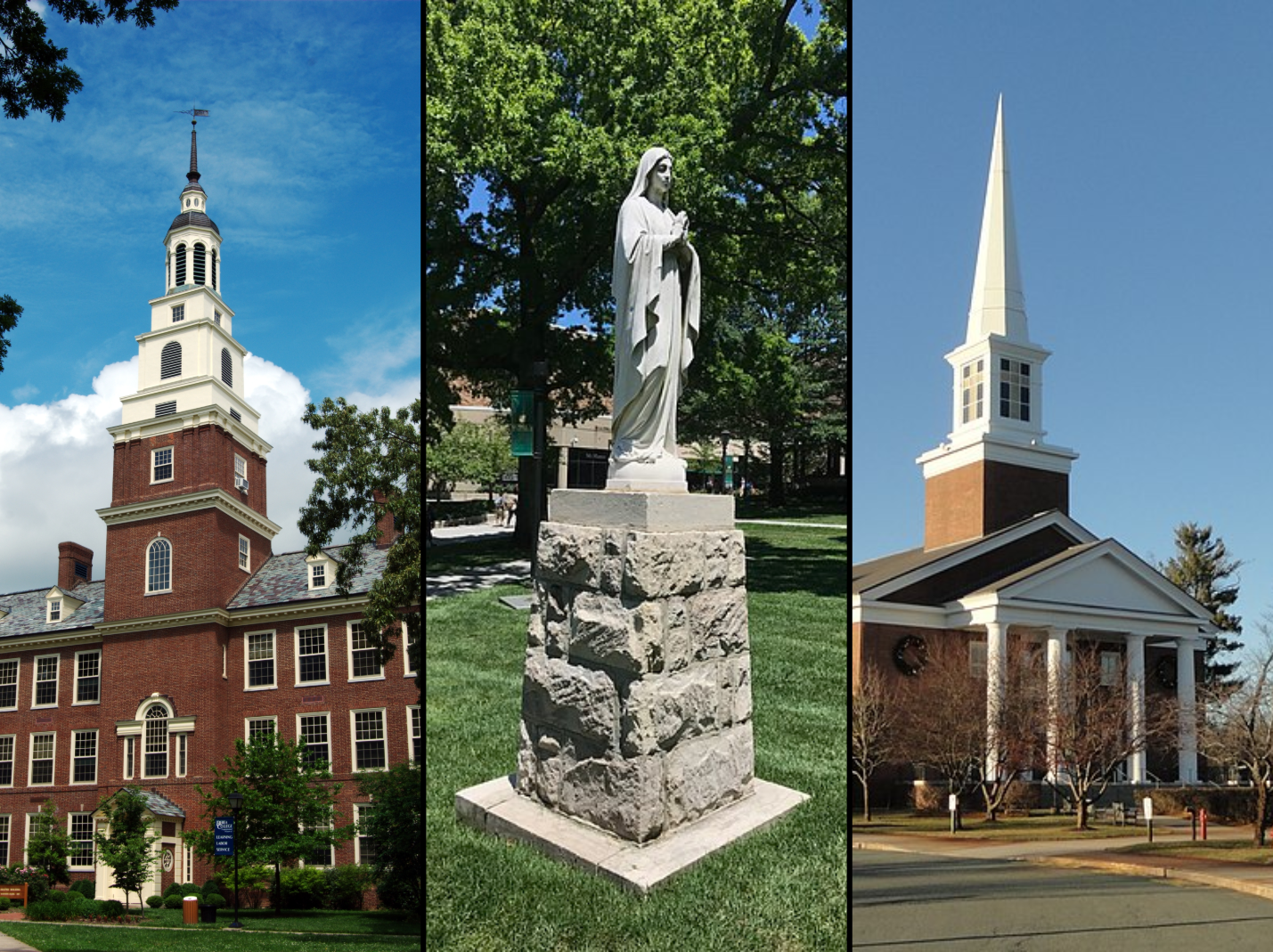
As anti-Israel protests convulsed American campuses in the spring semester—likely to reappear soon in the fall—one might be forgiven, judging from the headlines, for thinking that the Ivy League and a handful of major state universities constitute the entirety of American higher education. Not infrequently, even commentators on these events hailed from the same set of schools. But accepting this view distorts reality.
America’s experiment in ordered liberty has, in fact, generated a rich tapestry of smaller and mid-size private colleges and universities—a notable contrast from many other countries, where higher education is a predominantly statist enterprise. A significant subset of these schools reflects a specific religious origin—largely Protestant or Catholic, but Eastern Orthodox, Jewish, Mormon, and Muslim in a few cases. Each has a different story to tell, but many arose from a desire to marry the biblical injunction to love God and neighbor and the Socratic injunction to know thyself and pursue truth—the animating idea behind the liberal arts.
Many schools are grappling with existential challenges that threaten their future. While some may view this as a natural evolution, dismissing the loss of these institutions is shortsighted. Their unique voices contribute not only to their religious communities but also to institutional diversity, the American voluntary principle, and the moral foundations vital to our republic and the common good. Schools like Samford (Baptist), Thomas Aquinas (Catholic), and Valparaiso University (Lutheran) possess distinct traits and callings that enable them to address gaps in public life that other institutions often overlook.
For starters, many of these schools are not ideological monocultures but evince greater political diversity than many elite schools, both among the study body and the professoriate; overcoming polarization is part of their daily bread. Not all are located in rural areas, but many are. Students and teachers are often drawn to these colleges, moreover, not to scale the meritocratic ladder or to acquire a desirable “brand,” but from a desire, to quote the biblical prophet Micah, “to act justly and to love mercy and to walk humbly with your God.”
As such, one finds programs and opportunities on these campuses unlikely to be found at Harvard Yard or in New Haven. Take Berea College in Kentucky, where students do not pay tuition but work—often doing manual labor—for their education under the motto “God has made of one blood all the peoples of the earth.” At Catholic Loyola University in Maryland, first-year students in their Messina program take a unit on the “Good Life,” seeking to define the concept not in terms of “material goods and possessions,” but by “a sense of belonging, spiritual fulfillment, and the attainment of knowledge.” Honors students at evangelical Gordon College in Massachusetts seek to bring faith and learning together “by cultivating a tradition-informed and morally reflective sense of personal vocation by reading and discussing classic texts, drawn from Christian and other intellectual and spiritual traditions.” Plato, Augustine, Dante, Luther, and Shakespeare continue to be included in the curriculum—uncanceled.
Numerous additional examples could be adduced. Not a few, but hundreds of these schools exist and in practically every state, even if many tend to be clustered in the Midwest.
Networks such as the Association of Catholic Colleges and Universities, the Council on Christian Colleges and Universities, the Lilly Network, and the Network for Vocation in Undergraduate Education—part of the Council for Independent Colleges—bring these schools into conversations with one another and with trends and challenges in higher education. The vast majority eschew “indoctrination” but welcome people from all backgrounds who prefer the language of “vocation,” seeking to help young people define their lives not in career goals alone but in terms of community, higher purposes, and local and global service.
Sadly, recent years have hit these schools with stiff challenges.
The appeal of prestigious schools with their sports and Greek programs, along with demographic declines in college attendance, widespread criticism of higher education, rising operational costs, and the weakening of the liberal arts ideal, combined with the effects of the pandemic, poorly managed institutions chasing fleeting academic trends, and the increasing secularization of American life have together packed a mighty wallop.
Some schools will likely not survive; several have already gone under.
This is a pity for these schools, their local communities, and our general commonwealth. The republic needs educated people from all walks of life, and religion has historically served as a fertile breeding ground for the virtues necessary to sustain a just, free, and civil society: generosity, humility, trust, wisdom, patience, and charity, to name a few.
Regrettably, simple solutions do not exist. But given the questionable state of many elite and well-heeled schools, one wonders if the time is finally nigh when parents and philanthropists might bravely consider alternatives. One need not reinvent the wheel. A host of admirable, struggling, soulful institutions stand ready for fresh attention.
Image designed by Jared Gould— (left to right) Draper Building by Parkerdr on Wikimedia Commons; Statue, Loyola University Maryland, 4501 N. Charles Street by Baltimore Heritage on Wikimedia Commons; A. J. Gordon Memorial Chapel – Gordon College by Daderot on Wikimedia Commons.